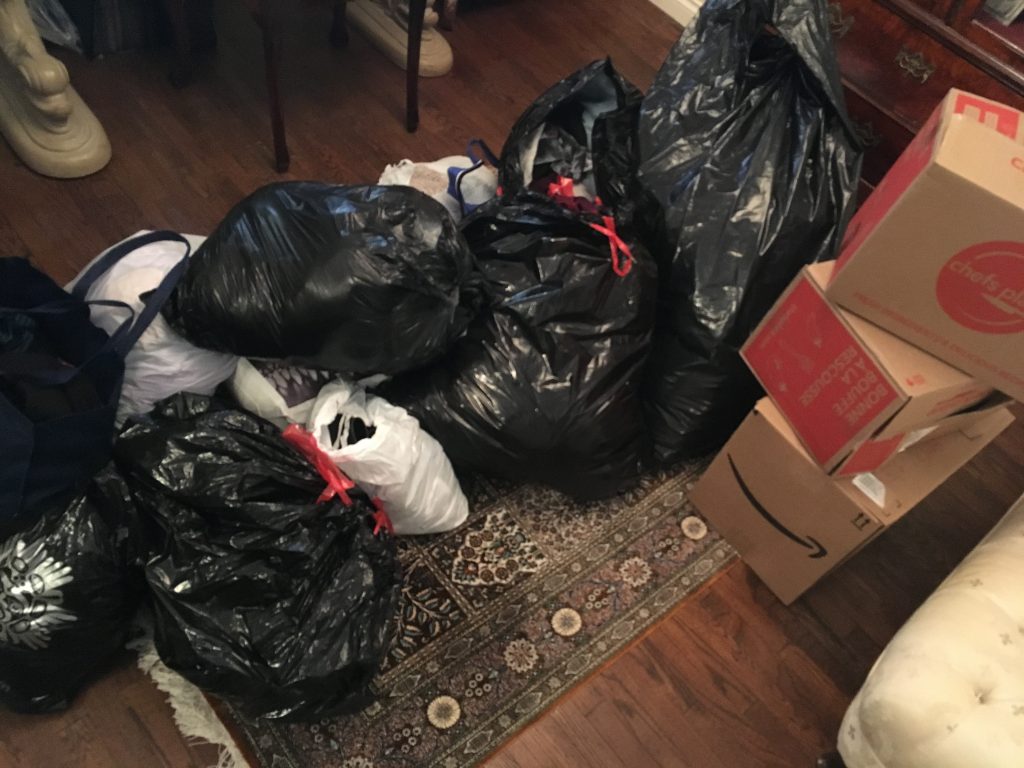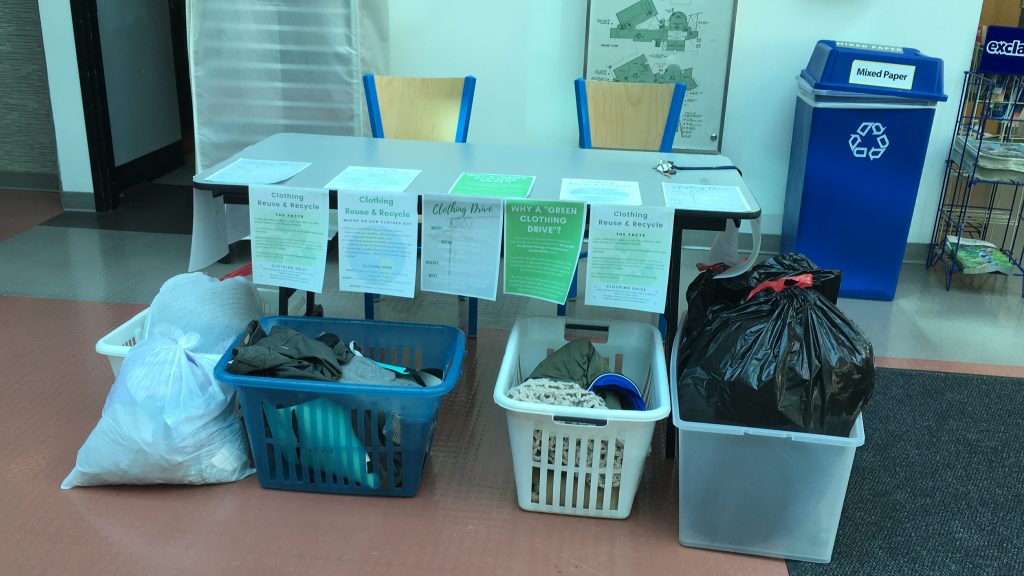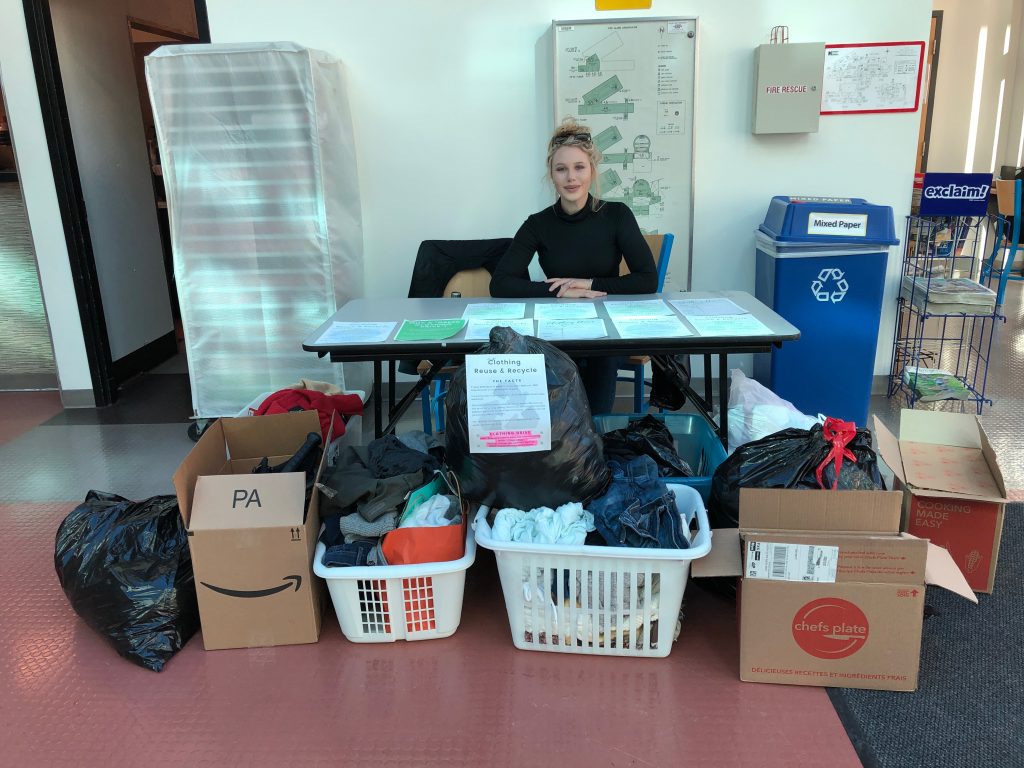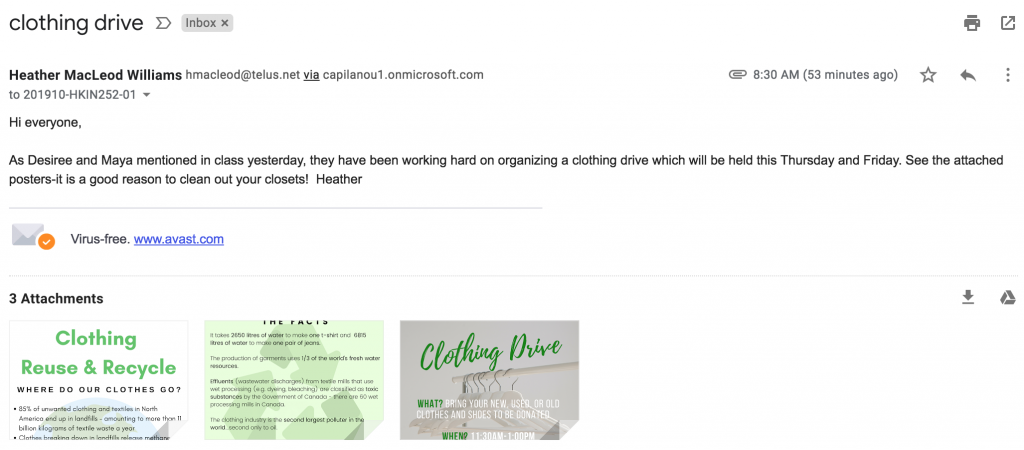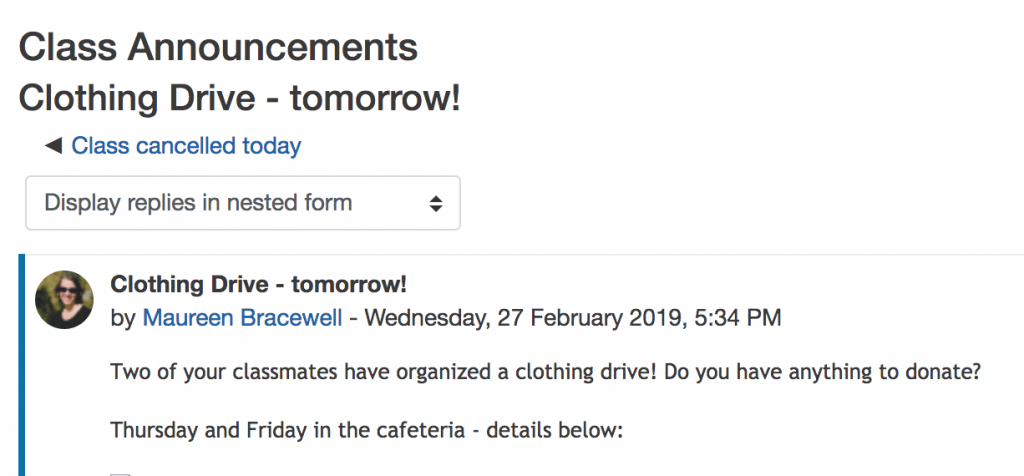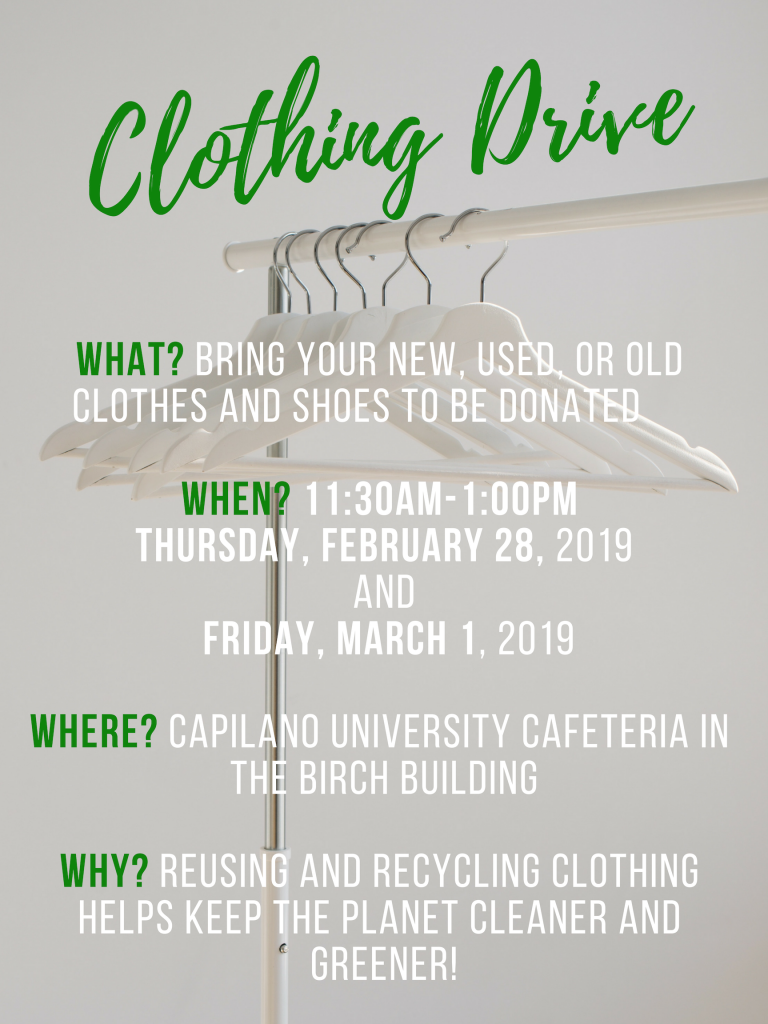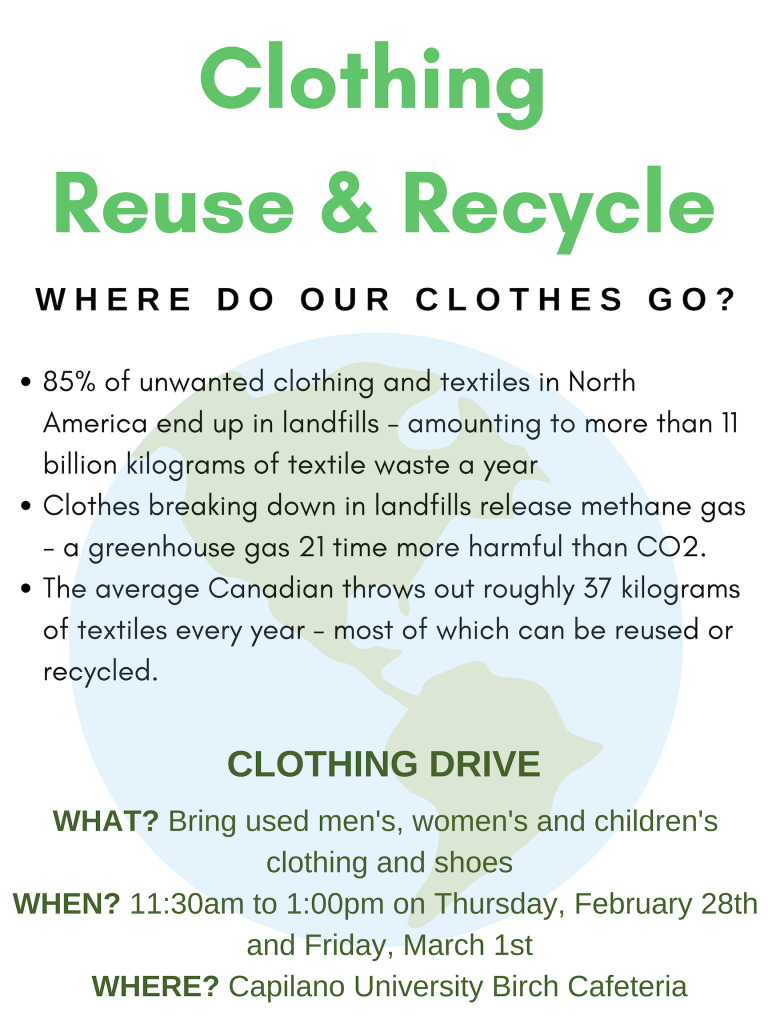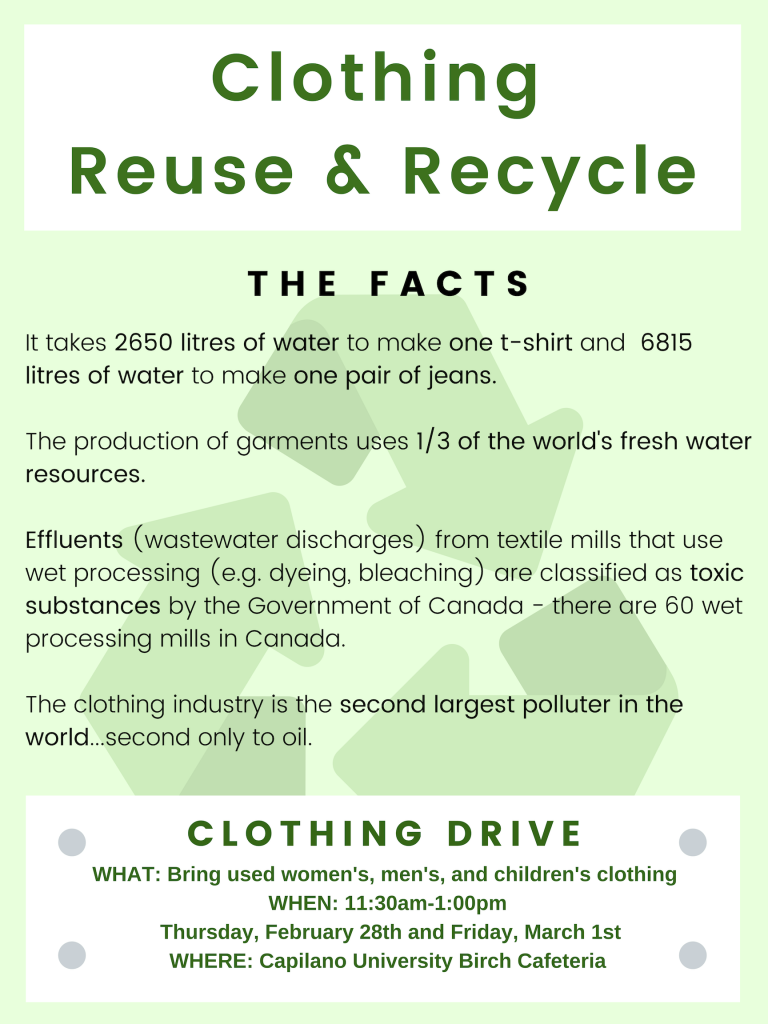Proposed initiatives for Action ePortfolio project:
1) Organize and host green clothing drive
2) Spread awareness about textile pollution
3) Make a personal commitment to not buy any clothing during the month of February
If your actions involve other people, how have your ideas been received? Are people supportive? What are the challenges?
Maya and I had to rely on the participation of others to materialize our goals for our green clothing drive. Our idea to host a clothing drive where individuals could bring lightly used clothing to be donated, and tattered clothing to be recycled, was well received by our professor, Cheryl Schreader, and by our friends and family. As our planning for the drive progressed, we reached out to the Green Inspiration BC organization to ask if they wanted to partner with us on this venture – the administrative manager for the organization responded to our email stating: “…you have an excellent idea and I hope we can assist you.” Ultimately, Maya and I decided not to partner with Green Inspiration BC because their business practices did not align with our conception of environmental consciousness. We decided instead that we would donate the clothes collected in good condition to local charities. As we reached out to our social media networks to promote our drive, we received positive and supportive comments from friends who took interest in our initiative. For example, on one of my Facebook posts advertising the drive, a friend of mine commented, “You’re saving the world miss Desi! One clothing drive at a time <3.” After the dates for the drive were finalized, Maya and I reached out to our professors and asked if they would promote the drive through their personal networks and to our classes – all of the professors that we contacted shared the information about our drive through email, Moodle, or social media.
We received many donations during the clothing drive and many positive responses from those donating. As well, multiple people walking past our drive asked us what we were doing and why we were doing it. When we explained the purpose of our clothing drive to these individuals, we received positive responses – a few individuals expressed hopes that we would extend our clothing drive into the following week so that they could participate!
If it is a personal endeavour, what were your thoughts as you made these personal commitments?
As part of my three proposed green initiatives, I made a personal commitment not to buy any clothing, shoes, or accessories for the month of February. I made this commitment as a personal endeavour towards awareness for textile pollution (the motivation behind our green clothing drive). This commitment was achieved with ease and I can proudly say that my actions during the month of February did not contribute to the pollution that comes from textile production or discarding.
What are the challenges that you are encountering?
The challenges I experienced with this clothing drive were minimal, but included: figuring out where we would donate the clothes; physically transporting the clothes that we collected; and, sorting through the clothes after the drive.
Are these changes sustainable? Is this a change that could easily be adopted by others? by communities? by society as a whole? How would you promote this?
Yes! Making a commitment not to shop is a great way to identify your clothing purchasing/discarding habits and reduce your role in pollution from textile production and waste. Taking a month off from purchasing new clothing takes zero effort, saves you money, and will help the environment! If you absolutely must find something new-to-you to wear, go hunting for an outfit in your local thrift stores – this is a great way to reduce impacts from textile pollution.
As well, donating your used clothing in good condition instead of tossing them into the trash is a feel-good and simple way of getting rid of your old clothes and keeping them out of landfills. There are many charities and organizations locally (and globally) that take used clothes and pass them on to individuals in need – all it takes is a quick Google search to find the one nearest you!
Recycling your old “unwearable” clothes is also easy! There are textile recycling depots all over Greater Vancouver where people can leave their clothes to go through a textile recycling process.
If I were to conceive this event on a greater scale, I would suggest that the government fund multiple warehouses across the city where people could drop off clothes and textiles in all conditions. These facilities would have employees go through the textiles and sort them based on wearability/functionality. This facility would offer free used textiles (especially clothing) to individuals in need in the community and find ways to repurpose used towels, bedsheets, etc. All textiles deemed “not useful” would go through an environmentally-friendly textile recycling process.
I would promote these actions by creating awareness around textile pollution in media (sharing the harsh facts as displayed in our posters). If people were made more aware of facts like “the textile industry is the second largest polluter, second only to oil,” they might take textile reuse and recycling more seriously. On a larger scale, I think that the government should create incentives for people who opt to donate (e.g. tax refunds) and should penalize textile waste through fines and restrictions.
Reflect on the success of your action projects.
Overall, our green clothing drive was a success! Maya and I began the event-planning process with a clear vision of our goals and the result was just as we had imagined! We collected a large amount of clothing that will be distributed between Working Gear, Dress for Success, Big Brothers, the Downtown Eastside Women’s Centre, and a textile recycling depot in North Vancouver. As well, our educational activism about textile pollution reached many individuals and was well received. This was a very enjoyable course project and I feel proud of my contributions to the community and to the environment.

